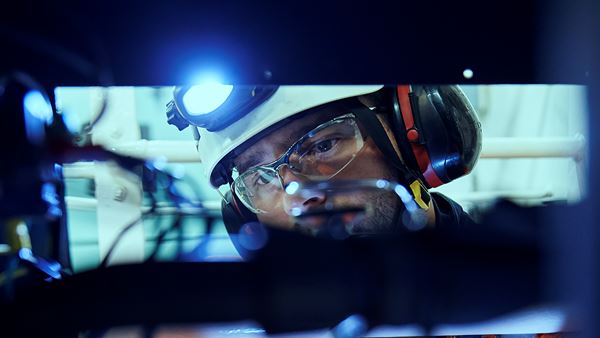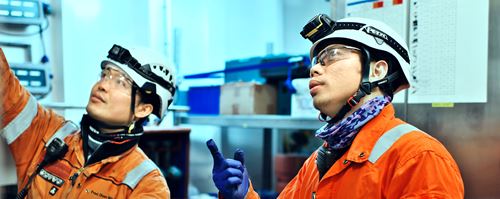At Fred. Olsen Windcarrier, the safety of our employees and subcontractors are a top priority. We operate in a dangerous environment, which is why we take every precaution to mitigate risks, no matter how small. As a result, we have an excellent safety record. We spoke to Morgan Teigen, HSEQ Manager, to get his insights into how we are able to achieve and maintain this.
How do you govern Health and Safety at Fred. Olsen Windcarrier?
Health and Safety is a primary concern for us, which is why we have a comprehensive HSE manual that outlines all necessary requirements and procedures to maintain a safe working environment, both on shore and on board our vessels. It applies to all our employees, as well as our subcontractors.
It is as short, clear, and straightforward as possible – if it was 300 pages long, no one would ever read it from start to finish! It is also an organic document that is revised yearly to include new compliance measures, as well as new learnings from our direct experience that help to ensure the safety of our people and assets.
Do these requirements and regulations vary internationally?
While our safety practices remain constant across all our operations, some countries do have their own rules and regulations we must also adhere to. The UK, for example, has some specific requirements. Before each project begins, we make a bridge contract where we agree what these are and what is required from everyone involved to stay compliant.
Who manages this process?
Each project has a designated HSEQ manager who is responsible for ensuring all standards and procedures are agreed upfront and followed thereafter. In some territories, this can be a complex process where there are some difficult regulations to follow. Nevertheless, it is something we always make a priority, and we have an excellent track record in this regard.

How do you help crew members to understand the correct procedures?
No matter which vessel it concerns, every marine crew member shall have a basic training certificate in accordance with the IMO’s Standards of Training, Certification, and Watchkeeping for seafarers (STCW). In addition, we have also developed our own safety induction program, which covers main areas and operations on our vessels.
The safety induction program applies to everyone who comes on board. It can be completed beforehand, or on arrival, and is done on a tablet or computer. It also includes a ‘safety tour’ of the vessel, to show the location of lifeboats and fire stations, what the various alarm signals means, and so on.
We also have a project-specific HSE Bridging agreement that refers to the Fred. Olsen HSE Manual, which is available to all personnel onboard both as hard copy and digitally. The vessel Master is responsible to communicate the agreed project HSE requirements to the involved personnel onboard.
How do you record and measure safety-related incidents?
We have a well-established process for reporting incidents. Let's say you are a cook on board, and you cut your finger instead of a vegetable. 20 years ago, no one would ever have reported that, but today everything is reported to the vessel Safety Officer. He or she then compiles a report that is sent to our HSEQ department for review and distribution. This enables us to know what the direct cause of the accident was, where it happened, why it happened, etc., so we can get to the root of the issue, learn from the incident, and ensure it doesn’t happen again.
This is also the case for near misses. If something drops from a crane, for example, that could have caused injury but didn’t, it is also reported. This is a high focus area for us – we don’t take any chances and we learn from our mistakes.
Health and Safety is a primary concern for us
- Morgan Teigen, HSEQ Manager
How did Covid-19 affect operations?
We have had some Covid-19 cases over the last couple of years, but each case has been handled in a very good manner both onboard the vessels and at the office. Plans and procedures are in place to handle such cases when they show up. This meant that we never had to stop our operations even once due to COVID-19.
The biggest challenge, however, was to work out how to transport personnel from one place to another as each country had different regulations that changed frequently to adhere to. For example, let’s say you were going from Norway to Belgium. There were certain regulations at the start, then another set of regulations during a pit stop in Amsterdam, and further regulations in Belgium. In addition, some of our clients had their own regulations! Nevertheless, it was handled in a very professional manner, and we managed to get round the problem every time.
While most countries in Europe don’t see Covid-19 as a critical disease anymore, others, particularly in Asia, still do. However, this is a topic we always bring up well in advance of a project starting, so everyone is aware what is needed.
Learn much more about HSEQ
